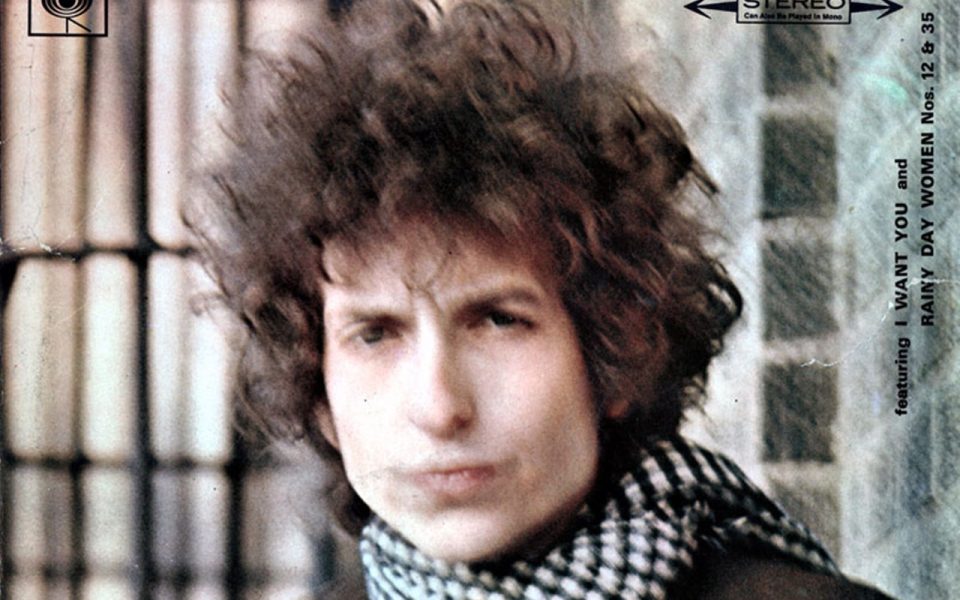by Jordan Green
1. “Stuck Inside of Mobile With the Memphis Blues Again”
Among the treasured albums of my dad’s vinyl collection was a copy of Bob Dylan’s 1966 masterpiece Blonde on Blonde with the cover neatly divided into quadrants by strips of blue tape. He explained to me that the album — which was released 50 years ago this week — was at the top of a stack of records that he brought back east after a stint living in San Francisco. He’d gone out west in ’66 at the age of 18. The stories he told me have acquired the weight of lore: an argument with my grandfather that precipitated his departure from Baltimore ending with a bathroom sink coming loose from the wall under my dad’s weight; taking acid and wandering along the Great Salt Lake; a late-night hitchhiking ride with two Native-American men who interrupted the journey to poach a deer. The songs on Blonde on Blonde perfectly capture the frustration and disaffection of being 18 in almost any generation, with lyrics that come across as a fevered hallucination, as in this line from “Stuck Inside of Mobile With the Memphis Blues Again”: “Mona tried to tell me/ To stay away from the train line/ She said that all the railroad men/ Just drink up your blood like wine/ An’ I said, ‘Oh, I didn’t know that/ But then again, there’s only one I’ve met/ An’ he just smoked my eyelids/ An’ punched my cigarette.’”
2. “Visions of Johanna”
I have to agree with music critic Greg Kot, co-host of WBEZ Chicago’s “Sound Opinions,” that the best track on the album, maybe the quintessential song of Dylan’s career, is “Visions of Johanna.” It captures what Dylan describes as a “thin, wild mercury sound” that had been in his head but theretofore unattainable. The Rimbaud-like imagery is vivid yet elusive, prompting Kot to speculate that the lyrics actually describe a vision of hell: “Ain’t it just like the night to play tricks when you’re trying to be so quiet?/ We sit here stranded, though we’re all doing our best to deny it/ And Louise holds a handful of rain, tempting you to defy it/ Lights flicker from the opposite loft/ In this room the pipes just cough/ The country music station plays soft/ But there’s nothing really nothing to turn off.”
3. “Sad Eyed Lady of Lowlands”
Recorded at 4 a.m. with an ace crew of Nashville session musicians and filling the entirety of Side 4 of the double album at 11 minutes and 22 seconds, “Sad Eyed Lady of the Lowlands” is epic in sweep. No less a figure than Tom Waits has compared it to Beowulf. “I think of a drifter around a fire with a tin cup under a bridge remembering a woman’s hair,” Waits said in 1991. “The song is a dream, a riddle and a prayer.”
4.
“Most Likely You Go Your Way (And I’ll Go Mine)”
The title of the song that opens Side 3 of Blonde on Blonde supplies the epigraph for my friend Ron Whitehead’s poem, “Music Saved My Life and Bob Dylan Saved My Soul: The Impossible Dream.” (A fellow Kentuckian, Ron plucked me out of rural obscurity, booked a poetry reading for me at the University of Louisville when I was still in high school, and roped me into road trips to read poems in New York City and New Orleans, but that’s a story for another day.) As an epigraph, “Most Likely You Go Your Way” suggests a cleavage, a conscientious decision to forge a new path. But in Ron’s telling, Dylan’s music sutures wounds and reconnects the poet with expressions of song that reach back earlier in his life, including Pentecostal holiness music like “Brother Matthew’s Gospel Quartet with my 3rd grade teacher Mrs. Duncan banging on that piano like I’d never heard in no Baptist church….” Ron reflects, “… Every time I turned to Bob Dylan’s music life/ Became bearable again I thought about Resurrection/ Again I thought about redemption again.”
Join the First Amendment Society, a membership that goes directly to funding TCB‘s newsroom.
We believe that reporting can save the world.
The TCB First Amendment Society recognizes the vital role of a free, unfettered press with a bundling of local experiences designed to build community, and unique engagements with our newsroom that will help you understand, and shape, local journalism’s critical role in uplifting the people in our cities.
All revenue goes directly into the newsroom as reporters’ salaries and freelance commissions.


Leave a Reply